
Filling Up a Giant Camera Car at Texaco
In 1986, Texaco’s gas stations ran a promotion where you received free Fujifilm film every time you filled up …

In 1986, Texaco’s gas stations ran a promotion where you received free Fujifilm film every time you filled up …
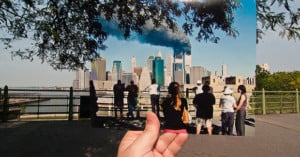
As a tribute to 9/11, Jason Powell revisited locations where photos of the attacks were captured on that fateful day and rephotographed them with the photos overlaid on the background.
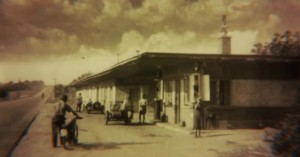
Miklós Falvay used 3D camera mapping techniques …
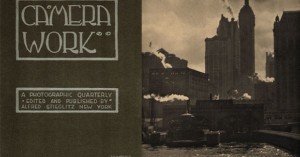
Between 1903 and 1917, photographer Alfred Stieglitz published a quarterly photographic journal called …
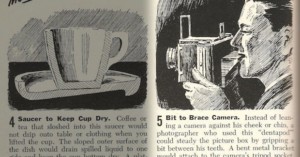
Back in March of 1954, Popular Science magazine featured an invention called the “dentapod” — a metal bracket attached …
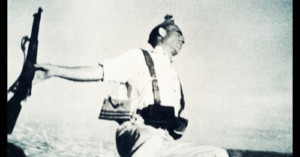
What would famous photographs look like if the photographers who created them had been using Instagram? That's a question that's answered by Mastergram, a site that takes the work of renowned photographers and passes them through Instagram filters.
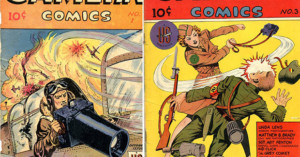
Between July 1944 and 1946, the U.S. Camera Publishing Company published a comic book titled "Camera Comics" in an attempt to get kids interested in the growing hobby of photography. Covers showed pilots pointing huge cameras out of planes and baddies getting whacked with cameras.
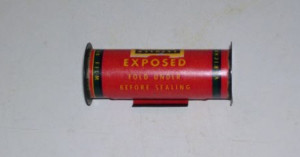
Photo-enthusiast etxenike recently won a spool of Verichrome Pan 116 film in an auction, and discovered that it had already been exposed. He had the film developed, and found that five of the eight photographs survived -- not bad for film that has been sitting around since the 50s or 60s!
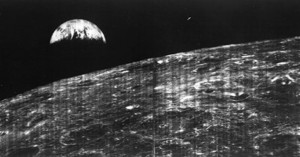
While we're on the subject of photos of Earth, did you know that the first photo showing the entire planet was captured by an unmanned NASA orbiter from the moon back in 1966? To accomplish this, they had to come up with a camera that could expose, process, scan, and transmit film photographs -- something "akin to a flying television station and photographic mini-lab".
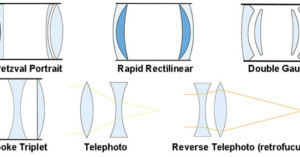
Rather than being built from scratch with new designs, new camera lenses are designed by taking existing lens designs …

Ever wonder how George Eastman chose the name “Kodak” for the company he …
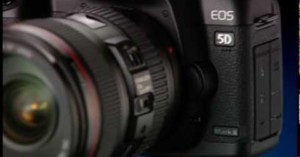
Canon created this short but interesting video showing how its SLR cameras evolved from the Canon Flex in 1959 …
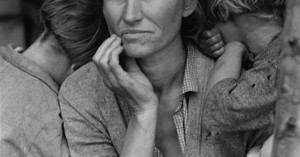
For every iconic photograph that's out there, there was likely a number of other photographs taken at the same time that many people probably have never seen. One such photo is Migrant Mother by Dorothea Lange -- an image that became one of the defining photos of the Great Depression. The woman in the photo, Florence Owens Thompson, had been travelling with her family when their car's timing chain snapped. After setting up a temporary camp to wait while her husband and two sons went to town for repairs, Dorothea Lange drove up and spent 10 minutes capturing 6 photos.
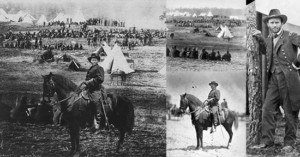
Image forensics company Fourandsix set up an interesting page called “ …
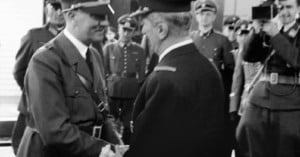
Earlier this week the New York Times was lent a mysterious photo album that contained 214 photos of Nazi Germany, including images taken just feet away from Hitler. There was no indication of who the photographer was, so the Lens blog decided to publish some of the photos and crowdsource the task of solving the mystery.
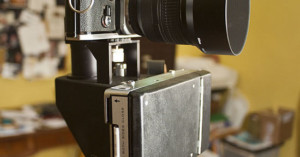
See the big box hanging out from under this Nikon F2 film SLR? It's called the Speed Magny, a special back that transforms the camera into an instant film camera. Instead of loading the camera with film, you take off the back of the camera and attach the 4lb contraption that's loaded with Polaroid pack film. Light entering the camera is directed onto the instant film below using lenses and mirrors, giving you a neat way to capture instant film photos at the expense of 5 stops of light.
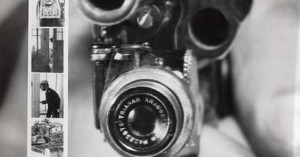
Used in New York back in 1938, this revolver camera was a Colt 38 with a tiny camera that …
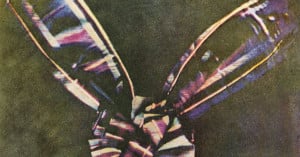
Color photography was born on this day 150 years ago in 1861 when Scottish physicist and mathematician James Clerk Maxwell and photographer Thomas Sutton -- inventor of the SLR camera -- shot the above photograph of a colored ribbon.
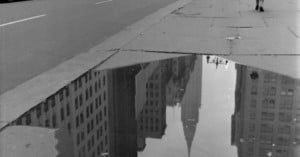
Frank Oscar Larson was an auditor living in Queens back in the 1950s who had a passion for street photography. Every weekend he would travel around the city armed with his Rolleiflex camera, photographing the things that caught his eye. After Larson died of a stroke at the age of 68 in 1964, his photographs quietly sat in a cardboard box for 45 years before finally being discovered by his son's widow in 2009. They offer a beautiful look into what life in NYC was like half a century ago.

The big story around the world this week was the death of Osama …
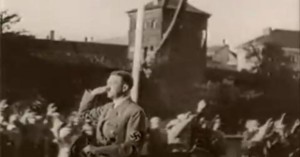
Last week we briefly wrote on how Leica played a role in saving Jews by helping them …

The Nikon F, Nikon's first SLR camera, played an important and influential role in photographic history after it was unveiled in 1959. It was the first to combine many of the emerging camera design ideas into a single body, and was the first SLR system widely adopted by professional photographers around the world. This is an interesting 20 minute documentary film that tells the story of how the camera was designed.

Here’s a short documentary film directed by Oskar Barnack (father of 35mm photography and inventor of the …
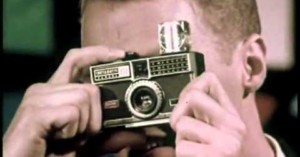
Here’s a neat blast from the past — a Kodak Instamatic commercial from the 1960s, when the latest technology …
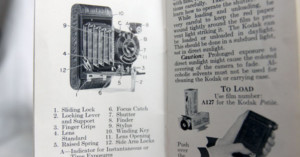
This is the instruction manual for the Kodak Petite camera, which was made …
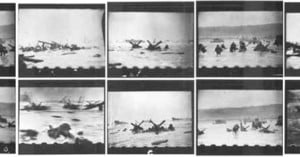
On June 6, 1944 — also known as D-Day — war photographer Robert …
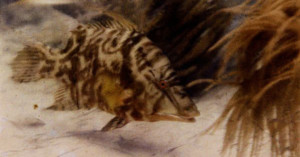
This is the first color photograph ever taken underwater. It's a hogfish captured off the Florida Keys in 1926 by National Geographic photographer Charles Martin and Dr. William Longley. In addition to some special waterproof camera housing, the duo used pounds of highly explosive magnesium flash powder to illuminate the scene.
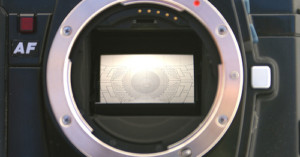
Did you know that Leica was actually the company that first invented autofocus? …

Did you know that some of Kodak’s early DSLR cameras had built-in games? Before Canon and Nikon started making …
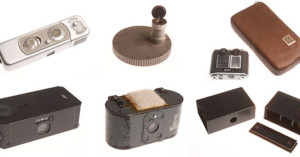
Like the US Government, the CIA has its own Flickr account, and one of the sets they have features photos of various gadgets used by the agency's spies over the years. Among the gadgets are a number of spy cameras designed for various purposes and scenarios.
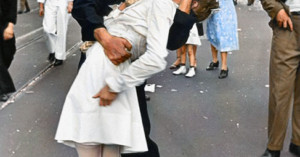
Redditor and DeviantArt user mygrapefruit took Alfred Eisenstaedt's famous photograph V-J Day in Times Square and colorized it, giving us a glimpse into what the photo might have looked like had Eisenstaedt used color film.

“Moving Stills” is a short 10-minute documentary created back in 1978 to show how New York-based photo agency …
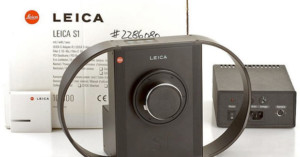
This strange looking device is the Leica S1, the first digital camera created …
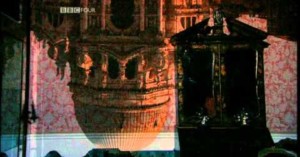
“The Genius of Photography” is a six part BBC series that explores some …
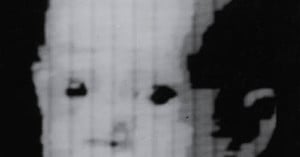
Did you know that the first digital camera invented in 1975 didn’t actually produce the first digital …
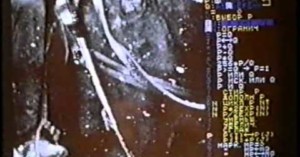
Three years before Photoshop 1.0 was released, computer engineers in the USSR were already retouching photographs using some surprisingly …
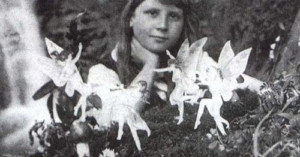
The British Journal of Photography is reporting today that Geoffrey Crawley -- the world-renowned photographer who debunked the Cottingley Fairies hoax in the 1980's -- has died. The hoax began in 1917 when two cousins named Elsie Wright and Frances Griffiths (aged 16 and 10, respectively) claimed to have discovered fairies and, after borrowing a camera, produced photos to prove it. The controversial photographs captured the world's attention for decades and even deceived Sir Arthur Conan Doyle before finally being debunked by Crawley in a series of articles published in the early '80s. In 1983 the cousins admitted that the photos were faked using cardboard cutouts.
It's interesting seeing how little it took to fool people with photographs in the early days of photography.
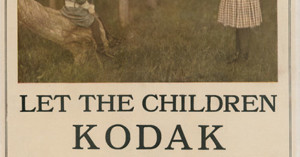
This is a Kodak advertisement that ran in the The Saturday Evening Post …
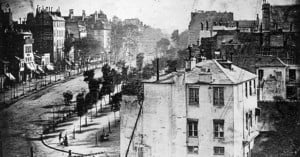
This photograph of Boulevard du Temple in Paris was made in 1838 by Louis Daguerre, the brilliant guy that invented the daguerreotype process of photography. Aside from its distinction of being a super early photograph, it's also the first photograph to ever include a human being. Because the image required an exposure time of over ten minutes, all the people, carriages, and other moving things disappear from the scene. However, in the bottom left hand corner is a man who just so happened to stay somewhat still during the shot -- he was having his shoes shined.